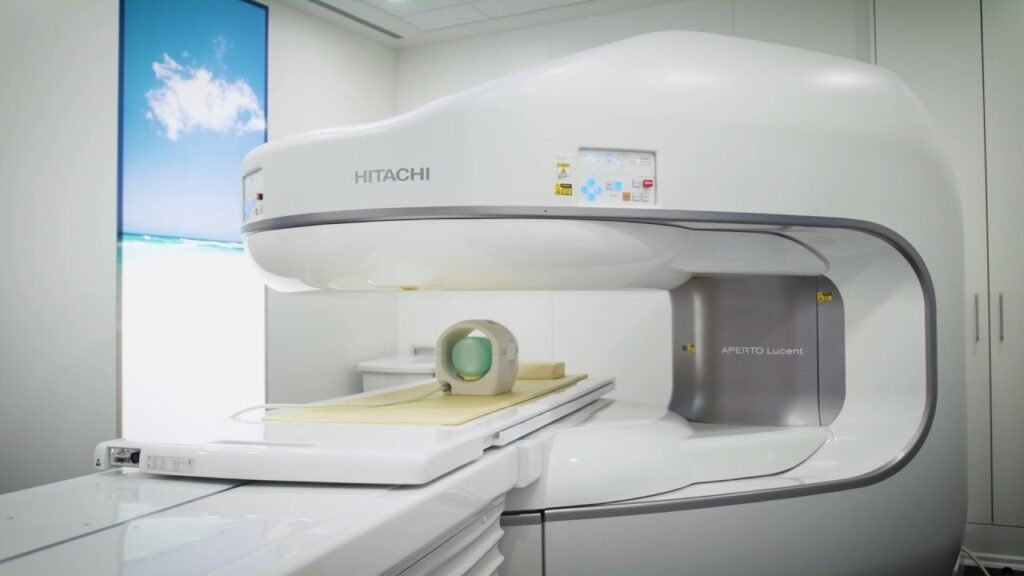Australia has taken a major step forward in healthcare innovation with the arrival of the APERTO Lucent Open MRI by Fujifilm — the nation’s first truly open MRI system. Installed in Sydney, this technology is changing how patients experience medical imaging, offering a comfortable, non-claustrophobic alternative to traditional MRI scanners. The system’s open and panoramic design represents a breakthrough that many healthcare professionals believe will soon become standard practice worldwide.
What Is the APERTO Lucent Open MRI?
The APERTO Lucent Open MRI is a next-generation magnetic resonance imaging system that replaces the tunnel-like structure of traditional MRIs with an open, spacious design. Developed by Fujifilm, this technology provides high-quality diagnostic images while ensuring maximum patient comfort. Unlike conventional MRIs, where patients are enclosed inside a narrow tube, the APERTO Lucent allows them to remain in a more relaxed position — reducing anxiety and claustrophobia.
In addition to patient comfort, the open design supports better accessibility for elderly individuals, children, and patients with disabilities. This makes it a major leap toward inclusive healthcare imaging.
How the Technology Works
The system uses a powerful magnetic field and radio waves to capture detailed images of organs, bones, and tissues. Like other MRI systems, it operates without radiation, making it safe for repeated use. What sets the Fujifilm Open MRI apart is its unique configuration — a single-pillar design that provides a 320-degree panoramic view.
This means patients can see outside the machine throughout the scan, significantly easing discomfort for those who struggle with confined spaces. Despite its open layout, the APERTO Lucent maintains high image resolution, ensuring that radiologists get precise, diagnostic-quality scans.
Sydney Leads the Way in Open MRI Innovation
Sydney has become the first city in Australia to host this cutting-edge system, and it’s already drawing attention from the medical community across the Asia-Pacific region. Hospitals and imaging centers in Japan, Singapore, and New Zealand are monitoring the results closely, with several planning to introduce similar open MRI systems within the next year.
Experts believe that Australia’s early adoption of this technology will set a new standard in patient-centered imaging, not only in Sydney but also across the country.
Why This Innovation Matters
Traditional MRI machines, while accurate, can cause anxiety in many patients — especially those who are claustrophobic, elderly, or young. In some cases, patients even cancel or postpone scans due to discomfort. The APERTO Lucent Open MRI addresses this challenge by creating a calmer, more reassuring experience.
Healthcare professionals say that the system could increase patient compliance, meaning more people will complete scans when needed. This leads to earlier diagnosis, better treatment planning, and improved outcomes across various medical fields, including neurology, orthopedics, and oncology.
Benefits Beyond Comfort
While the open design is the most visible improvement, the benefits of the Fujifilm APERTO Lucent MRI go much deeper.
1. High-Quality Diagnostic Imaging
The system uses advanced magnetic technology to produce sharp, detailed scans comparable to those from traditional closed MRI systems.
2. Faster Scanning Time
Most scans take between 20 and 30 minutes, making the process quicker and more efficient for patients and healthcare providers alike.
3. Reduced Anxiety and Stress
The open structure and improved visibility help patients stay calm, reducing the need for sedation or repeat scans.
4. Accessibility for All Patients
The system’s design makes it easier for individuals with limited mobility or special needs to undergo MRI procedures safely.
How Other Countries Are Responding
The introduction of Open MRI technology in Australia is inspiring similar initiatives abroad. In the United States, several hospitals are testing comparable open MRI models to evaluate their performance in large-scale diagnostic use. European nations like Germany and the UK are also studying how open systems could improve efficiency in public healthcare.
Experts from Singapore’s HealthTech Innovation Center have already expressed interest in incorporating the Fujifilm system, noting its potential to make MRI services more accessible in smaller hospitals and community clinics.
The shift toward open MRI systems marks a global movement in medical imaging — one that prioritizes patient comfort and mental well-being alongside technological precision.
The Future of Open MRI Systems
The growing adoption of open MRI scanners could redefine radiology as we know it. As technology advances, manufacturers like Fujifilm are expected to enhance image speed, clarity, and cost efficiency even further.
In the long run, experts predict that open MRI systems will not just be an alternative but the new global standard in diagnostic imaging. They offer a more human-centered approach, aligning with the healthcare industry’s focus on accessibility, inclusivity, and patient trust.
The Global Impact of Fujifilm’s Innovation
Fujifilm’s innovation with the APERTO Lucent Open MRI is part of a broader global effort to make healthcare technology more empathetic. The company has long been recognized for advancing medical imaging, and this latest development reflects its vision of combining comfort, safety, and precision.
Radiologists worldwide are optimistic that the open MRI design will make imaging procedures more approachable — especially in low- and middle-income countries where patient fear and limited access often delay diagnosis.
Final Thoughts
The arrival of the APERTO Lucent Open MRI in Sydney is not just a local milestone — it’s part of a worldwide transformation in diagnostic imaging. As more countries explore similar innovations, the future of healthcare looks more inclusive, comfortable, and efficient.
This new technology stands as a reminder that medical progress isn’t only about sharper images or faster scans — it’s about improving the human experience within the healthcare system.
Read More: 5 Key Actions to End Childhood Lead Poisoning Worldwide


